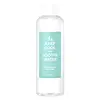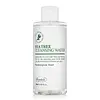What's inside
What's inside
 Key Ingredients
Key Ingredients

 Benefits
Benefits

 Concerns
Concerns

 Ingredients Side-by-side
Ingredients Side-by-side

Water
Skin ConditioningChamaecyparis Obtusa Leaf Extract
Skin ConditioningSodium Chloride
MaskingEthylhexylglycerin
Skin ConditioningScutellaria Baicalensis Root Extract
AstringentThuja Orientalis Extract
AntimicrobialSodium Citrate
BufferingButylene Glycol
Humectant1,2-Hexanediol
Skin ConditioningLonicera Japonica Flower Extract
Skin ConditioningPinus Densiflora Leaf Extract
AntimicrobialHexylene Glycol
EmulsifyingDisodium Cocoamphodiacetate
CleansingForsythia Suspensa Fruit Extract
AntioxidantDisodium EDTA
Bambusa Vulgaris Extract
Skin ConditioningCitric Acid
BufferingDipropylene Glycol
HumectantWater, Chamaecyparis Obtusa Leaf Extract, Sodium Chloride, Ethylhexylglycerin, Scutellaria Baicalensis Root Extract, Thuja Orientalis Extract, Sodium Citrate, Butylene Glycol, 1,2-Hexanediol, Lonicera Japonica Flower Extract, Pinus Densiflora Leaf Extract, Hexylene Glycol, Disodium Cocoamphodiacetate, Forsythia Suspensa Fruit Extract, Disodium EDTA, Bambusa Vulgaris Extract, Citric Acid, Dipropylene Glycol
Ingredients Explained
These ingredients are found in both products.
Ingredients higher up in an ingredient list are typically present in a larger amount.
1,2-Hexanediol is a synthetic liquid and another multi-functional powerhouse.
It is a:
- Humectant, drawing moisture into the skin
- Emollient, helping to soften skin
- Solvent, dispersing and stabilizing formulas
- Preservative booster, enhancing the antimicrobial activity of other preservatives
Butylene Glycol (or BG) is used within cosmetic products for a few different reasons:
Overall, Butylene Glycol is a safe and well-rounded ingredient that works well with other ingredients.
Though this ingredient works well with most skin types, some people with sensitive skin may experience a reaction such as allergic rashes, closed comedones, or itchiness.
Learn more about Butylene GlycolDipropylene Glycol is a synthetically created humectant, stabilizer, and solvent.
This ingredient helps:
Dipropylene glycol is technically an alcohol, but it belongs to the glycol family (often considered part of the ‘good’ alcohols). This means it is hydrating and gentle on skin unlike drying solvent alcohols like denatured alcohol.
As a masking agent, Dipropylene Glycol can be used to cover the smell of other ingredients. However, it does not have a scent.
Studies show Dipropylene Glycol is considered safe to use in skincare.
Learn more about Dipropylene GlycolChances are, you eat sodium chloride every day. Sodium Chloride is also known as table salt.
This ingredient has many purposes in skincare: thickener, emulsifier, and exfoliator.
You'll most likely find this ingredient in cleansers where it is used to create a gel-like texture. As an emulsifier, it also prevents ingredients from separating.
There is much debate on whether this ingredient is comedogenic. The short answer - comedogenic ratings don't tell the whole story. Learn more about comegodenic ratings here.
The concensus about this ingredient causing acne seems to be divided. Research is needed to understand if this ingredient does cause acne.
Scrubs may use salt as the primary exfoliating ingredient.
Learn more about Sodium ChlorideWater. It's the most common cosmetic ingredient of all. You'll usually see it at the top of ingredient lists, meaning that it makes up the largest part of the product.
So why is it so popular? Water most often acts as a solvent - this means that it helps dissolve other ingredients into the formulation.
You'll also recognize water as that liquid we all need to stay alive. If you see this, drink a glass of water. Stay hydrated!
Learn more about Water